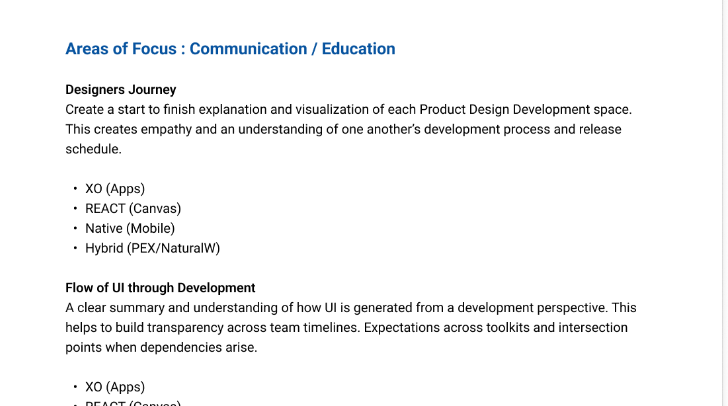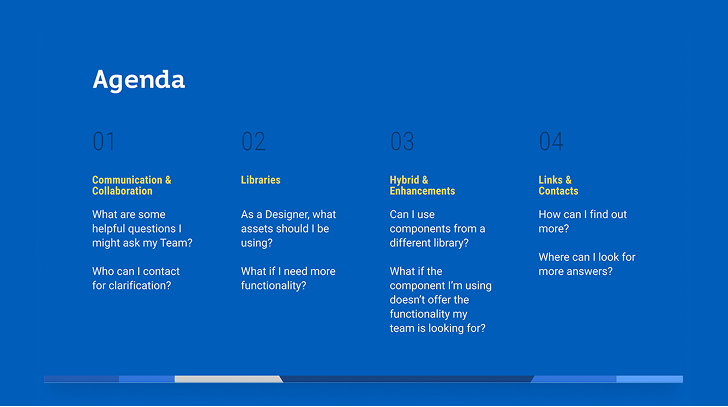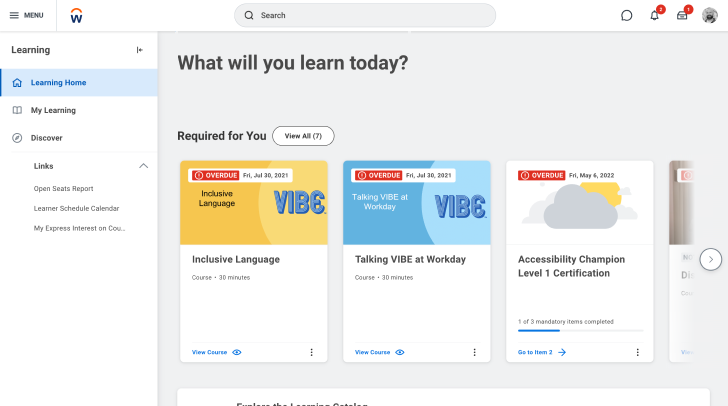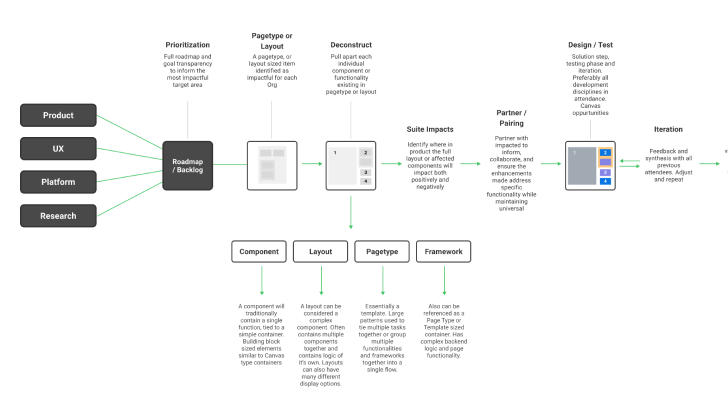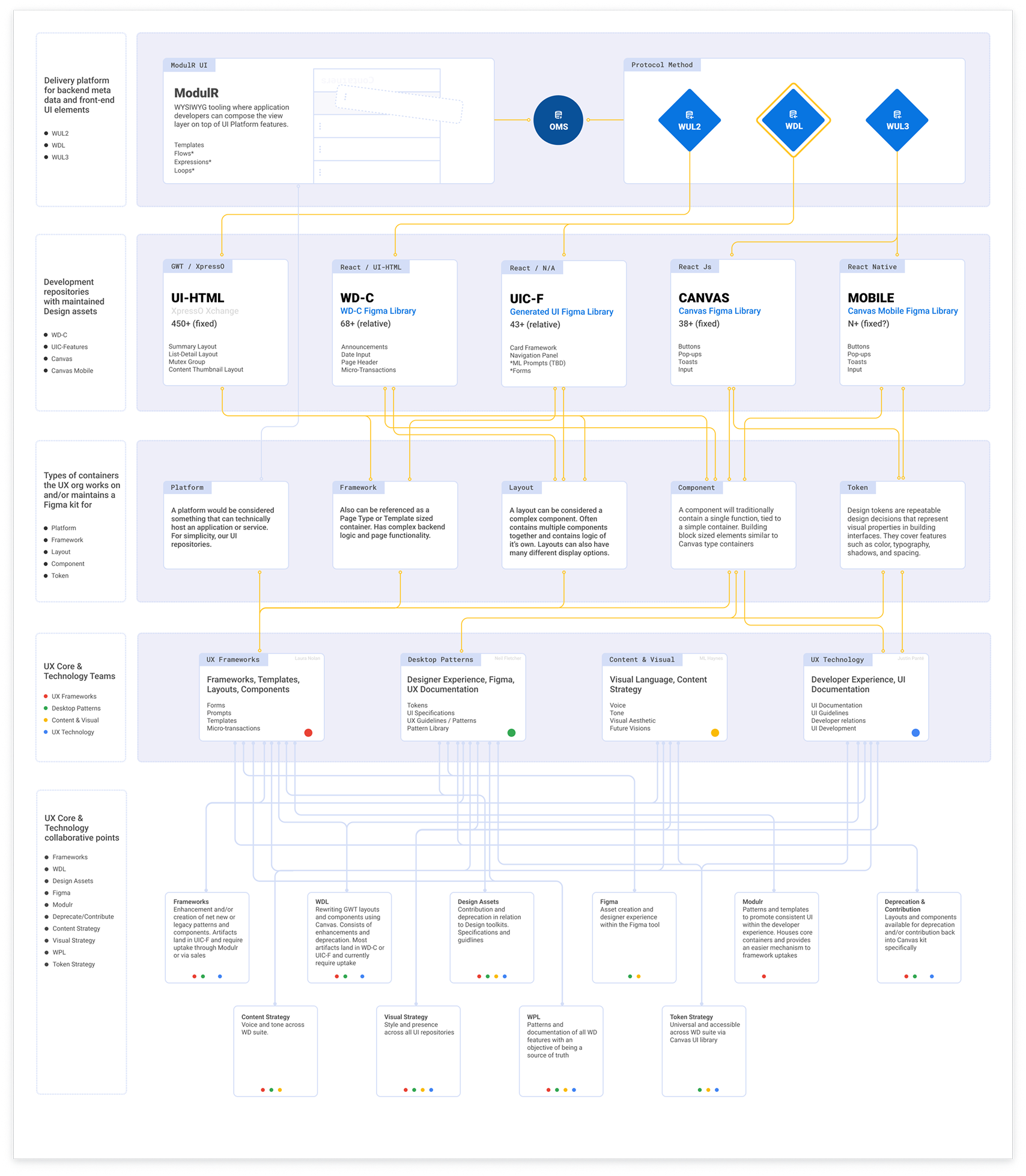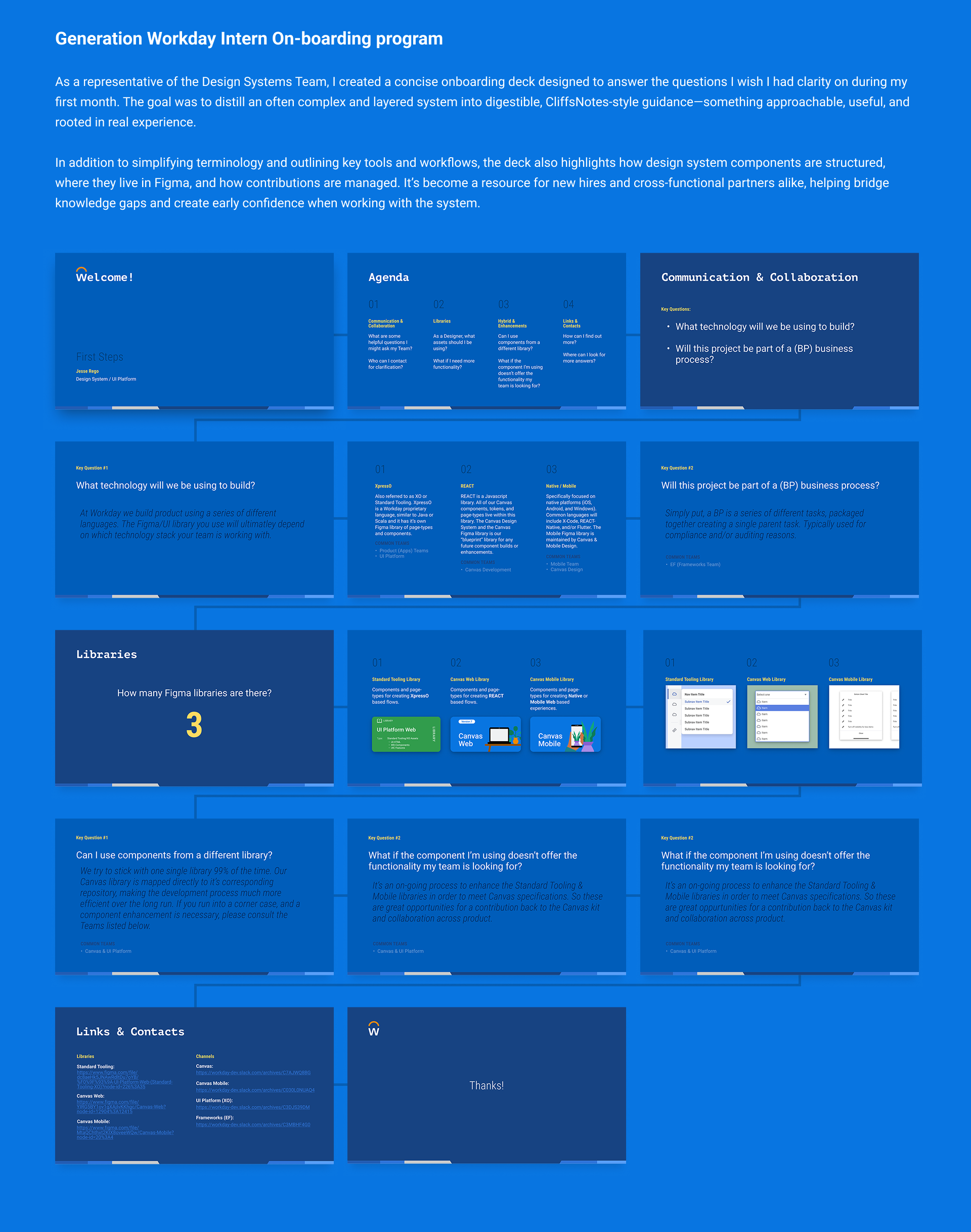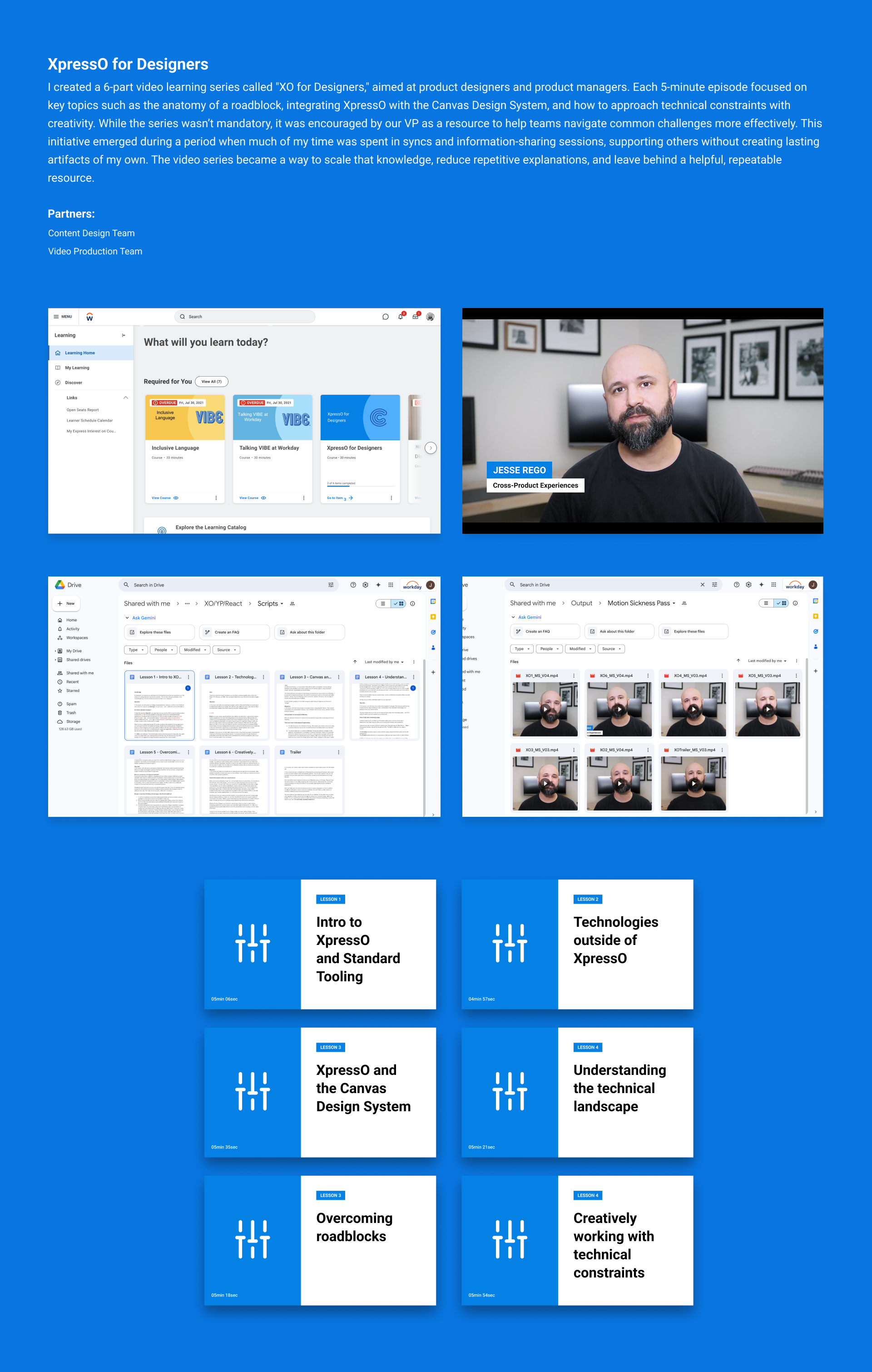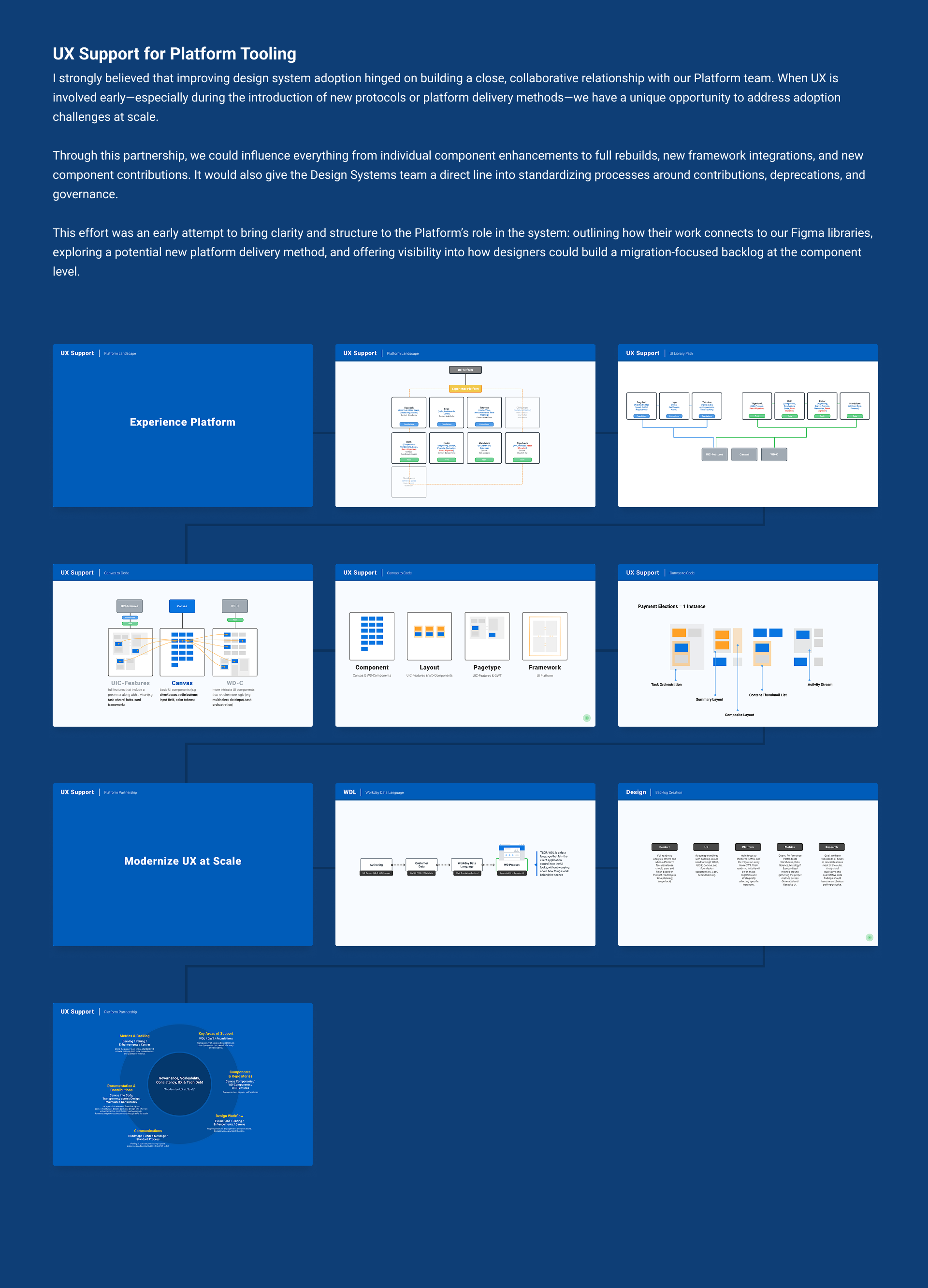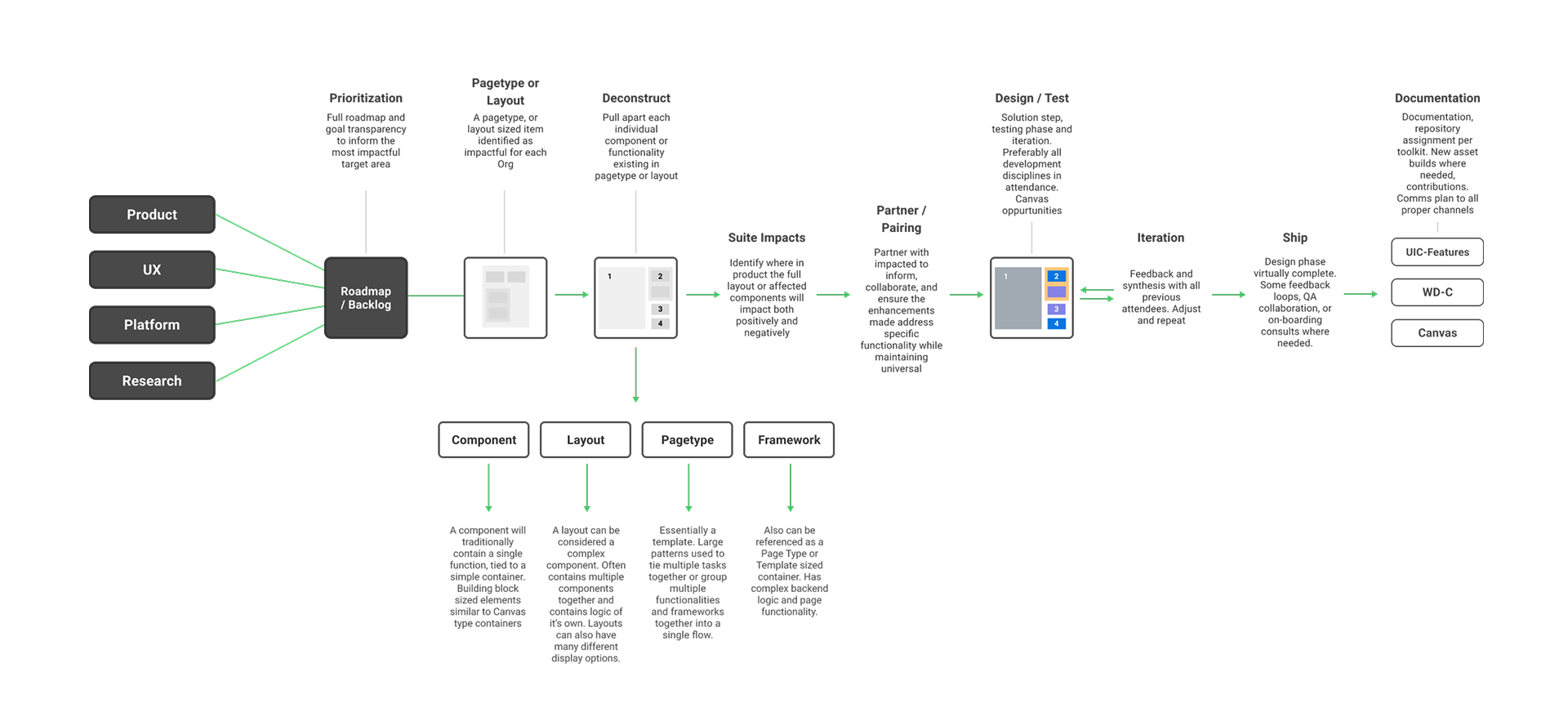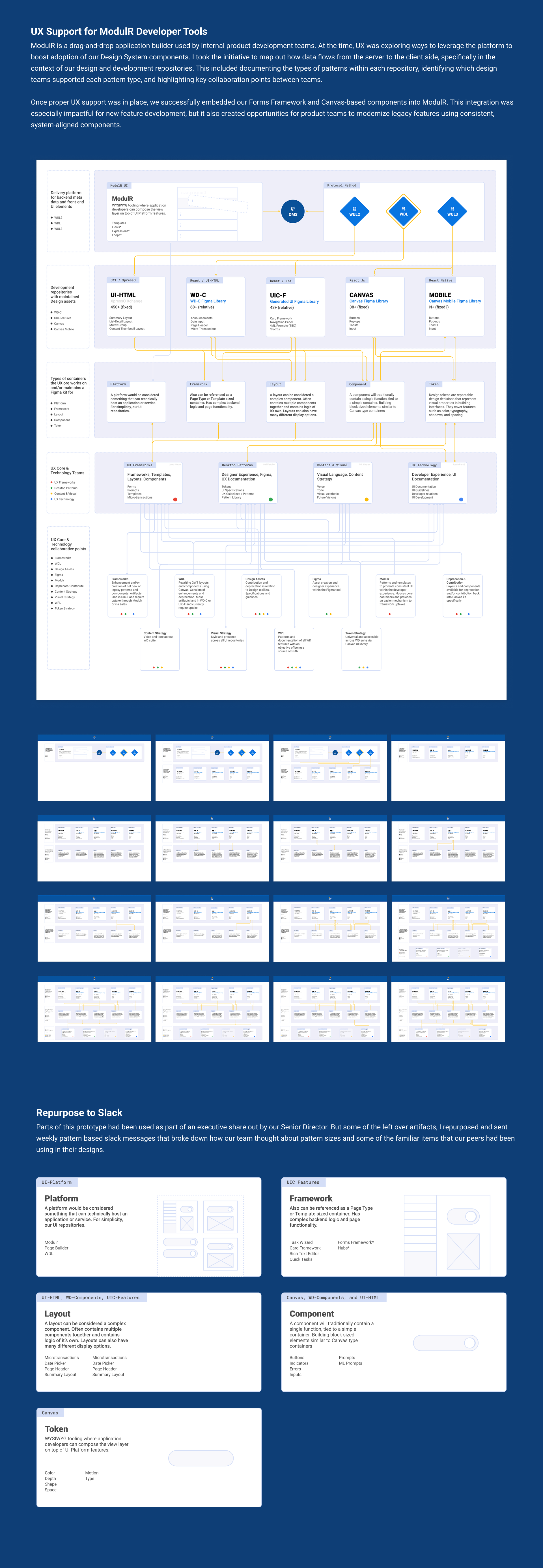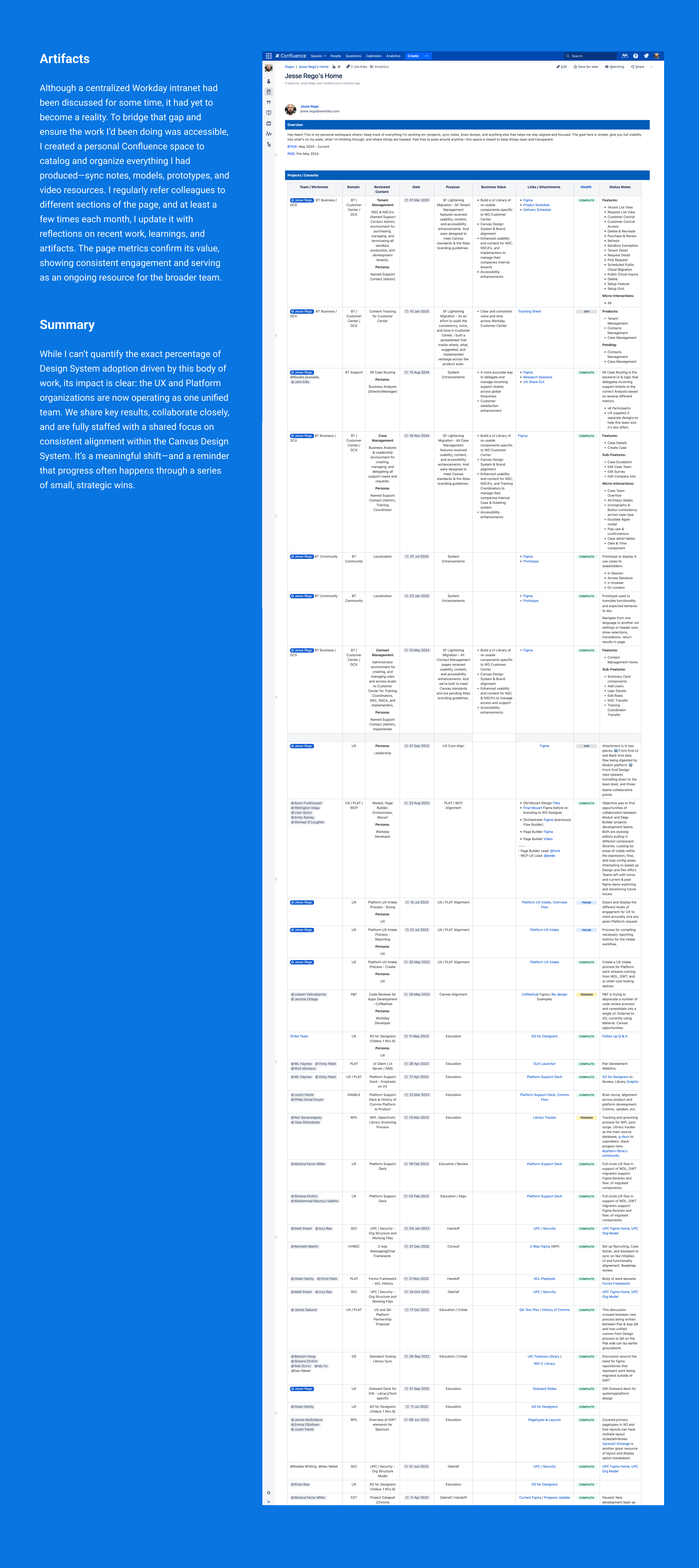UX Org Up-Level
With hard skills and technical tooling in place our Designers were primed for a program that targeted an up-level on the current (and future) development landscape at Workday. Centering around transparency and collaboration, this initiative’s primary delivery method circled around communications and education across the Org.
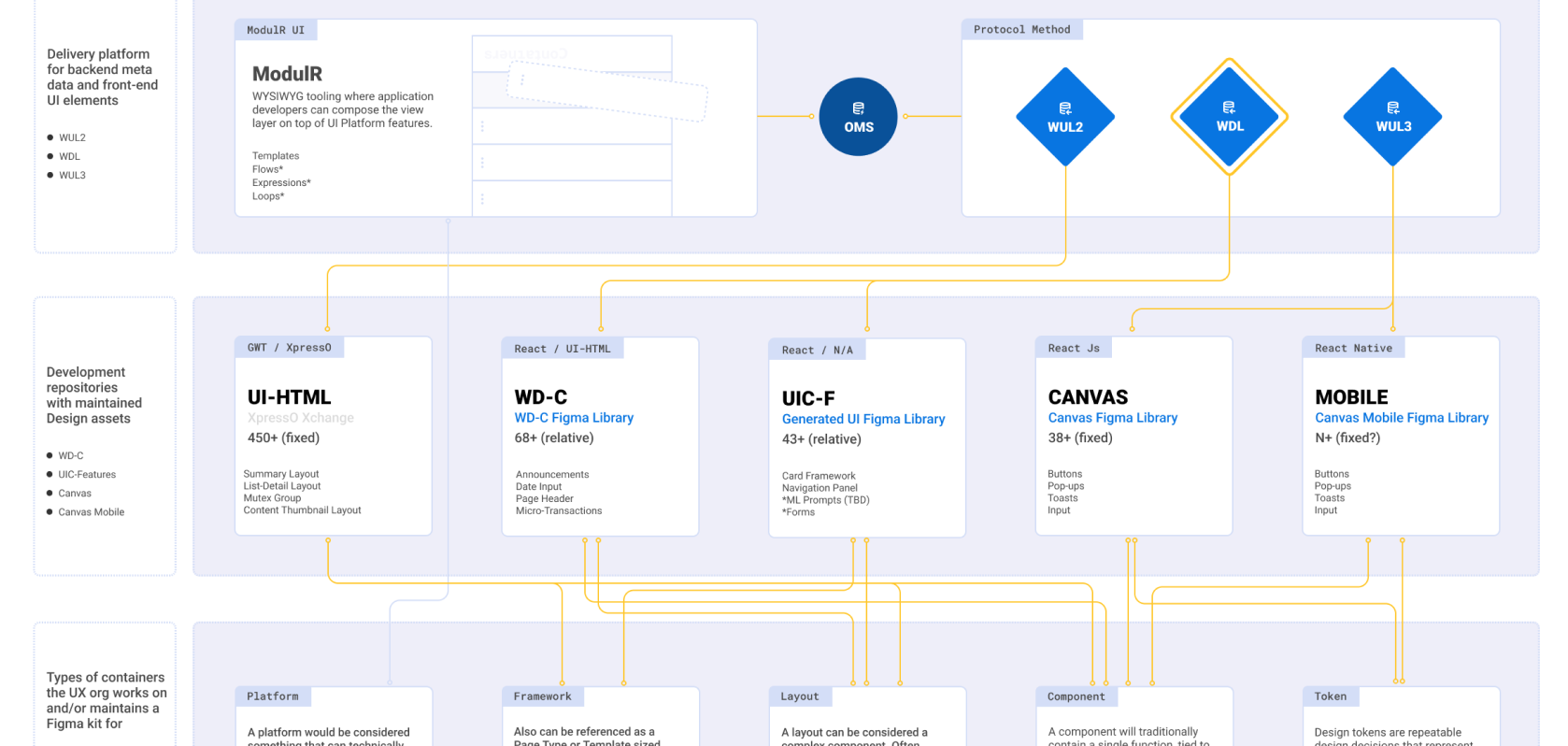
Overview
After launching the Canvas Design System in the end of 2017, Design System adoption had still remained at around 1% of product heading into 2022. The organization had a lot of turnover within leadership roles, and the following project(s) was my attempt at keeping our relationship and support strong with Platform partners while increasing a more technical understand of Core development within the UX Org.
Impact at a Glance
Process
Problem
Workday’s transition to the Canvas Design System exposed significant gaps in tooling and understanding across UX. While the move from Sketch to Figma was embraced, older XpressO toolkits were abandoned, leaving designers unsure how to align with engineering realities. Many arrived at reviews with unbuildable designs, unclear on how platform tooling connected to the design system, how enhancements were funded, or even which UI kit to use depending on the development team. The introduction of React compounded this confusion, as its role within the platform was widely misunderstood.
- A swap from Sketch to Figma had been well received internally but the older XpressO toolkits had been abandoned during this transition period.
- Product Designers had been showing up to reviews with their PM’s and Developers with designs, flows, and assets that were not buildable.
- An unclear understanding of how Core platform tooling works in relation to our Design System. How enhancements get funded or how to present contributions.
- Which UI kit to use based on the development team I’m working with.
Approach
My approach centered on clarity, translation, and enablement. By mapping the differences between XpressO and REACT, I created side-by-side guides and diagrams to explain how Canvas operated across both stacks. Misconceptions were addressed through workshops and playbooks that translated engineering concepts into design-system language, while scalable artifacts like living documentation, Figma kits, and quick-start guides gave designers the tools they needed. Ongoing support—through office hours, kickoff involvement, and showcasing success stories—ensured adoption was not only possible but understood, turning a complex platform shift into a shared, sustainable practice.
- Outline and define organization tooling pain points across product designers and systems designers. And craft a delivery solution that would scale.
- Craft a scalable delivery plan in alignment with leadership KR.
- Pair with WD content strategists and videographers to formalize and refine materials.
- Document and distribute all debriefs, syncs, prototypes and models created.
- Built two new Figma repos that aligned with Platform tooling while using Design System tokens as frequently as possible.
UI Platform Repositories
Project Gallery
